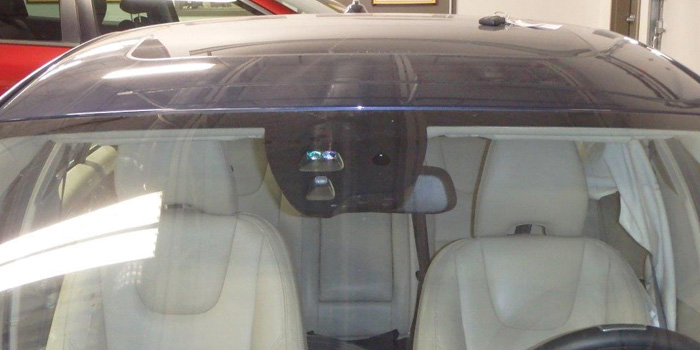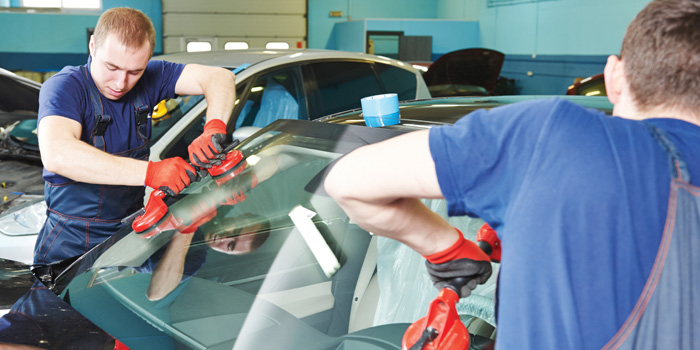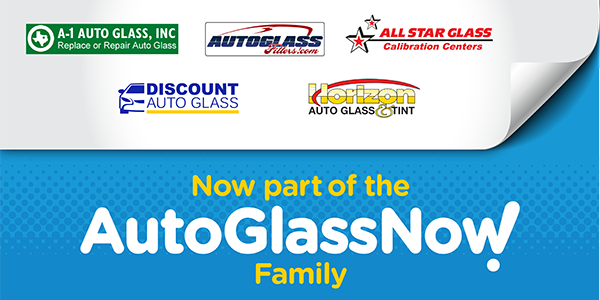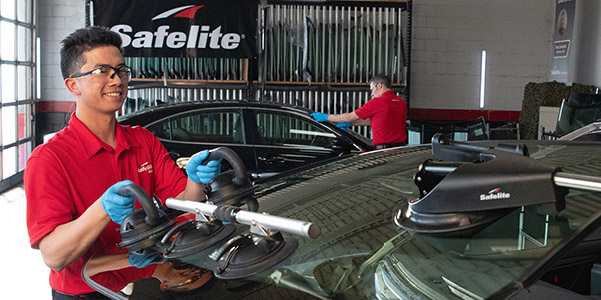The replacement of auto glass in the U.S. has gone through some changes over the years. The last two years have seen even more dramatic changes as the auto body repair industry takes a whole new look at this process. New tools and the need for electronics to complete the job have changed this business. The business model that has been in place for decades is in great need of an upgrade as the times and vehicles are changing.
Current Model
As a shop, you have various reasons for needing glass removed. It could be collision damage or an R&I for paint. No matter what the need, many shops call a glass company to come out and remove the glass. Once removed, all repairs are completed and the glass company is once again called to install the glass. This seems to be the current business model prevalent in our industry today, but it has problems – problems that may cause you considerable time and expense.
The Basics
First, I want to be sure we all understand the basics of glass removal:
- There is no guarantee the glass can be saved. If it breaks, the customer or insurance company needs to be notified.
- There is no guarantee the vehicle will not be damaged. This extra work must be added to the bill.
- Glass is considered a structural component and must be done correctly.
- Some glass removals are easy, but many are not.
Time Is Money
Time is money. If you sublet your glass work and a technician is right there all the time at your disposal, that’s great. It’s not the norm, nor is the glass company making money on that, but it is a great service they offer you. To all other shops that don’t have this level of service, I ask, how much time do you wait for sublets? If your shop is on the ball and you’re scheduling the removal when the vehicle is checking in or being blueprinted, congratulations on a job well done! As the vehicle is being repaired, there’s usually time for removal. Critical scheduling is not as significant at this time.
Now we need to schedule the install, as glass techs just don’t appear out of thin air. How many times does a car get delayed in the repair or refinish process and the glass tech shows up while it’s still in the booth or at some other point in the repair that does not allow him to install the glass? Another issue is that the glass tech may have time in the morning but you need him in the afternoon. Now the delay will affect delivery and tremendously affect cycle time.
Recalibrations
If the glass in question is a windshield and is part of the new Advanced Driver Assist Systems or ADAS, you have a whole new set of issues.
We know airbags and safety systems need to have codes cleared, which can be easily done with scan tools, but recalibrations are completely different and require dealer scan tools to reprogram the main computers. This level of real-time scanning is only offered by dealers and specialized companies. Looking up requirements after vehicle repairs is the first step to address this issue.
There will be no light on the dash to warn you. It is a requirement of repair. Most glass companies do not have the tools to recalibrate these new sensors or systems. The procedure will be left to the body shop to do.
For a body shop, it’s not difficult to send the vehicle to a dealer to be recalibrated. The auto body repair industry has dealt with vehicle electronic issues like these for years. We’ve always worked in or factored in the time it takes to do this procedure. We may have someone come in or send the vehicle to the dealer. If it was a simple clearing of a code, we might buy scan tools to complete this step in-house.
The issue is your cycle time. If the windshield is R&I’d or replaced, the recalibration must be done after installation as the cameras use the glass as a focal lens. Many times, the glass installation is one of the last operations completed before delivery. This new procedure needs to be factored in during blueprinting or pre-op, so the possibility of adding a day or two to the repair is highly likely, which could affect your cycle time. Knowing and planning for this is critical to limiting any wasted time.
Limiting Vehicle Damage
During the removal process, some of the power tools used by technicians can and will damage paint or metal. If this problem plagues your shop, it’s time to take a look at some new tools to remove glass.
We all remember trying to use piano wire to remove glass. Using handles and two people is definitely a thing of the past. New tools that use wire that’s stronger and shaped for sharp edges, or tools that use a string or cord that’s best described as string on steroids, are available and work well. These tools limit damage to glass and moldings as well as paint and metal. I say limit because, well, nothing’s perfect.
These tools allow a technician to remove many glass parts with a lesser learning curve than tools in the past. Ease of use and training makes these tools very effective for anyone to use. You can see many of these tools in action on YouTube.
The more efficient and less damaging tools reduce the damage, saving time and money for shops during repairs. The damage that may be caused by less efficient procedures can cause more work and stress to a shop’s production. As vehicles use more adhesives for more than just glass, the tools will have multiple applications.
The new tools also change the glass removal game for shops. Subletting the removal may not be feasible or profitable. Bringing the glass work in-house might be an overlooked business option as it might be a better business than you think. Maybe you don’t want the liability associated with windshield installation, but doing the tempered jobs might be a good way to increase your revenue or limit your amount of sublets.

Not Just Cycle Time
It’s not just about cycle time. Moving vehicles through a shop efficiently and with as little stops as possible is the best way to be efficient and, honestly, make money.
There’s so much more that’s related to work moving smoothly. Money is the No. 1 motivator. For technicians, labor that’s subletted out is money lost from their pocket. Diversifying and learning new skills is a definite way to increase labor hours. A good example is bumper repair. The added labor of bumper repair has made a large impact on technicians and shops, and glass labor has the ability to do the same. In fact, any new skills or training provided or learned can have the same effect on a shop. By keeping as much as possible in the shop, you can keep workflow moving and increase labor hours.
Keeping workflow moving also has a big role in boosting shop morale. I see so many technicians get stressed about work as hours get reduced. The repair becomes more complex, and repair time is pushed further and further. To have problems or delays because of outside vendors makes morale even worse. Uncontrollable issues are one thing, but lack of or bad scheduling of sublet procedures can be infuriating to a shop.
Glass Industry
The glass shops are scrambling with the new recalibration issues. Even dealers are at a loss. One dealer says you need to recalibrate the crash warning or lane departure systems after windshield installation, and another dealer on the other side of town says you don’t. Some will do it only if you have the dealer glass installed. This confusion is causing problems all across the U.S. If manufacturers continue this way, the mobile glass industry will change forever. You may not be able to get your windshield replaced at your home or even same-day service. The recalibration has to be done before returning the vehicle to the customer. This issue needs to be on your mind when you schedule for the windshields in your shop. If it isn’t, your customer may not be too happy.
Summary
Planning for sublets and procedures that cannot be provided in-house is more of a requirement today than ever. As electronics and new materials come into our industry, we’ll find that we may need to sublet more procedures. Looking to find ways to keep more work in-house is a key to profitability and survival in this industry. Using manufacturer websites and ALLDATA along with I-CAR (new tech questions on their website) is now required more than ever. Take a look at preparing for new sublet issues or even look into new products to help your shop.














